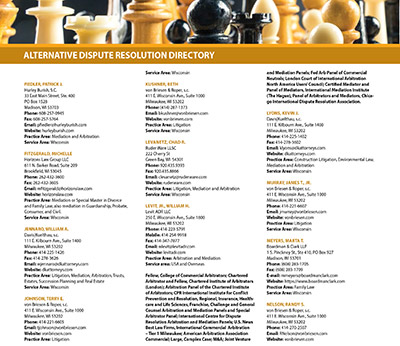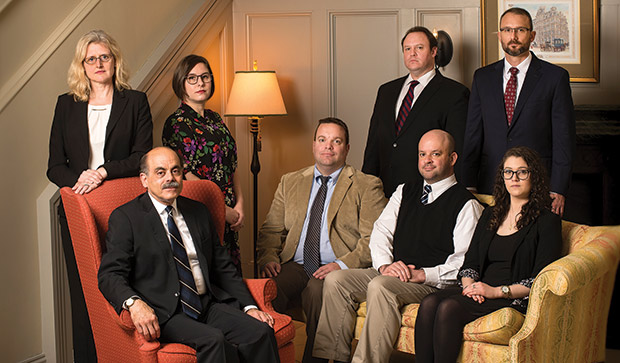Commentary: Don’t be afraid of joint sessions
By: DOLAN MEDIA NEWSWIRES//December 17, 2012//


By Tracy Allen
Dolan Media Newswires
Every A-list mediator knows an effective joint session can be a critical, persuasive and powerful component of a worthwhile mediation process.
Lately, though, there seems to be a national trend to “do away” with the joint or general session.
Mediator-wannabes are taught that a good mediation model is one where advocates and parties are encouraged to jointly share their views and positions in a respectful manner that, at a minimum, allows the decision-makers to evaluate their competition and opponents in a joint, civil setting with the mediator.
But joint sessions, in the format trainees are taught, are avoided by many advocates and mediators.
There are several reasons for this, and most of them come down to fear. The fear derives from the obvious: human behavior is unpredictable, notwithstanding any prior commitment to civility and ground rules.
Confrontation is the antithesis of man’s basic desire to live in peace. Sitting across from the adversary is uncomfortable. Putting lawyers together makes them boast and brag to show off for their clients. Lawyers will pounce on the opposing client if permitted a “free shot” in a board room.
It’s a waste of time, especially because everyone already knows all the positions and arguments of each party. The joint session will derail the potential for a productive negotiation so let’s not take the risk.
But shying away from a general session is giving up the opportunity to gain valuable insight into human behavior, reactions and assessment. In most insurance cases, the adjuster has seen only words on paper. At mediation, the insured and injured come alive. If plaintiff’s best exhibit is the plaintiff, wouldn’t it be of value for the decision maker with the checkbook to be able to evaluate the strength of that element in the litigation before meeting in a courtroom?
If your client has wild ideas about the value and strengths of the case and you are having difficulty getting him or her to understand the risks of litigation, wouldn’t it be helpful if your client heard it directly from the opposition in a respectful, organized presentation?
There are myriad additional reasons that must be weighed and balanced against the fear of negotiation derailment by convening a joint session, but there are at least two very practical (and often forgotten) aspects of using a substantive joint session that make sense:
- If we are paying lawyers and mediators by the hour, is it more efficient to discuss the common issues, positions, thoughts and arguments in joint session?
- And, do you, or your client, need a dry run in a safe, confidential setting?
In the background of the joint session debate is the assumption that all joint sessions look alike. If that were the case, mediators could be robots.
As lawyers and mediators evolve, the A-list players craft their mediation processes to fit the dispute. They do significant advance intelligence gathering and strategizing with the participants to design an entire mediation process that has the best chance for a positive outcome for all the stakeholders.
Process design responsibility rests in the mediator and the advocates. Once the mediator as the negotiation coach has a feel for the conflict, all sorts of possibilities come to mind to tailor-make an effective process for the parties.
The mediator can then work with counsel to reach consensus on the format, content and tone of the joint gathering. Advocates can then, in turn, work with their clients to prepare to be effective participants in the tailor-made design.
The joint session doesn’t have to come at the beginning of the mediation. Maybe there are private caucus sessions with parties and counsel or just counsel before a general gathering. Maybe the joint session is for purposes of “meet ’n’ greet,” and to agree on content for the negotiation, with no substantive presentations being made.
What counsel often fail to understand is that the mediator needs to gather data and intelligence about the conflict. It isn’t only the words on the paper that brought the parties into the dispute. The human element and the human interactions of the players on stage are very important to the process and the manner in which the negotiations will take place. As the traffic cop of the negotiations, the mediator needs more than the case evaluation summary or the briefs on the motions for summary judgment.
If the role of the mediator is to be neutral or omni-partial, there is credibility value for the mediator to work with parties together. The symmetry of the mediator’s treatment of the participants, the balanced questions and the inquiries of the mediator necessary to effectively direct the negotiation are all intangible aspects that come forth in a joint session.
From engagement to the end, mediators are attempting to build mediator capital with the participants and there is value to the mediator to use the joint session to test the waters and the players.
In your next mediation (after you have identified the reasons for the impasse and the need to involve a mediator), give some thought to how you can use the mediator and the process to advance the disputants toward resolution. Consider using a joint session to your advantage and to the aid of your opponent.
Make or ask for suggestions from the mediator and opposing counsel on what value might come to the decision makers and the mediator if some time is spent working together. Design your process to fit the cause.
And then prepare yourself, your client and the mediator to make the process fit the conflict.
Legal News
- Milwaukee’s Common Council now has the most African Americans, women and openly LGBTQ members ever
- Office of School Safety Provides Behavioral and Threat Assessment Management Training Ahead of 25th Anniversary of Columbine Shooting
- Wisconsin Supreme Court to hear arguments in Democratic governor’s suit against GOP-led Legislature
- Lawsuit asks Wisconsin Supreme Court to strike down governor’s 400-year veto
- Wisconsin man pleads not guilty to neglect in disappearance of boy
- ACS Selects University of Wisconsin Law School’s Miriam Seifter for 2024 Ruth Bader Ginsburg Scholar Award
- People with disabilities sue in Wisconsin over lack of electronic absentee ballots
- Wisconsin Republicans ignore governor’s call to spend $125M to combat ‘forever chemicals’
- Native American voices are finally factoring into energy projects
- Steven Avery prosecutor Ken Kratz admits ‘mistakes were made’
- Colombian national extradited to Milwaukee faces International narcotics-trafficking conspiracy charge
- MPD: Milwaukee homicides down nearly 40 percent compared to last year
WLJ People
- Power 30 Personal Injury Attorneys – Russell Nicolet
- Power 30 Personal Injury Attorneys – Benjamin Nicolet
- Power 30 Personal Injury Attorneys – Dustin T. Woehl
- Power 30 Personal Injury Attorneys – Katherine Metzger
- Power 30 Personal Injury Attorneys – Joseph Ryan
- Power 30 Personal Injury Attorneys – James M. Ryan
- Power 30 Personal Injury Attorneys – Dana Wachs
- Power 30 Personal Injury Attorneys – Mark L. Thomsen
- Power 30 Personal Injury Attorneys – Matthew Lein
- Power 30 Personal Injury Attorneys – Jeffrey A. Pitman
- Power 30 Personal Injury Attorneys – William Pemberton
- Power 30 Personal Injury Attorneys – Howard S. Sicula










